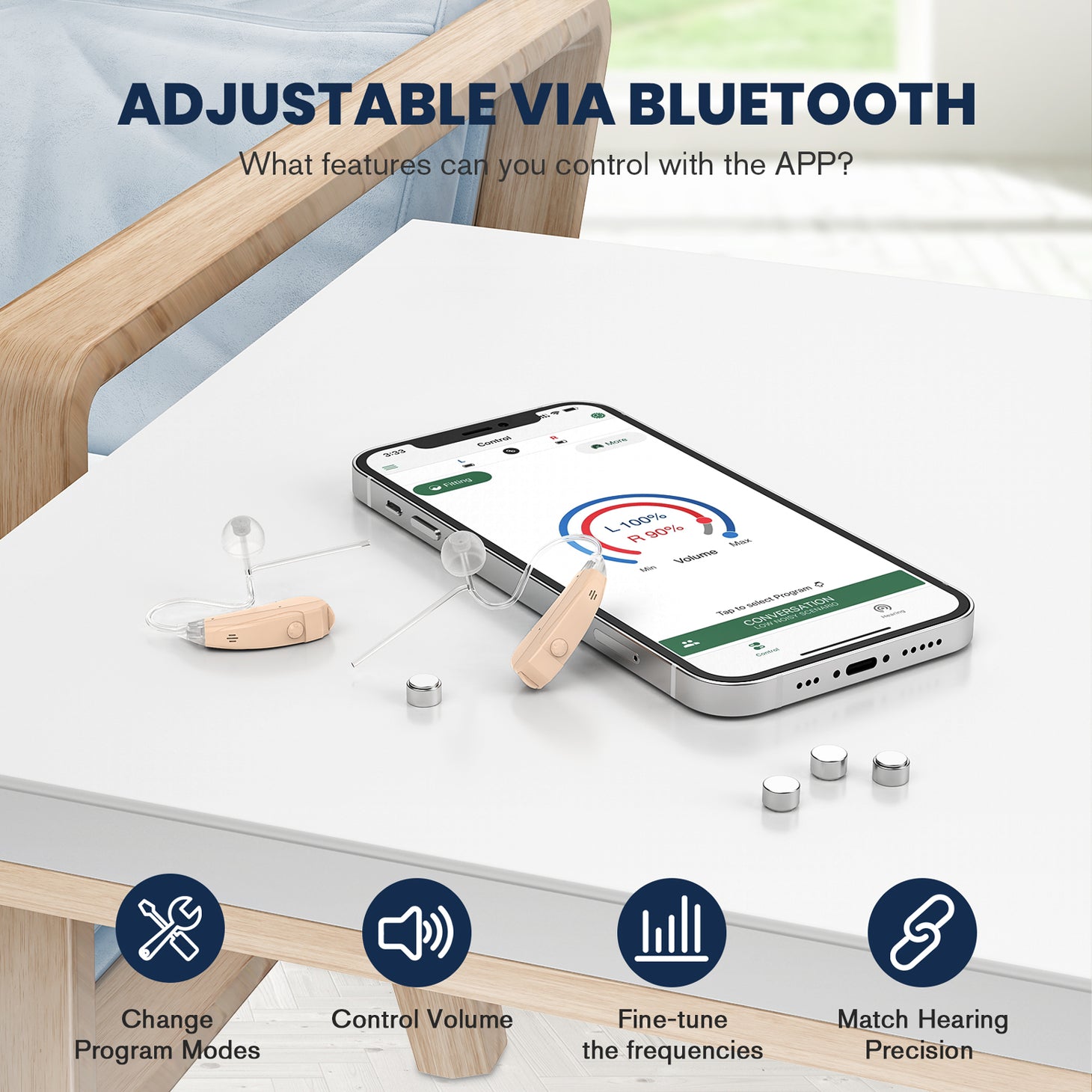Rechargeable Bluetooth hearing aids have revolutionized the way individuals with hearing loss experience the world around them. With advancements in technology, these devices offer a range of advantages that enhance convenience and improve overall quality of life. In this article, we will explore the various benefits of rechargeable Bluetooth hearing aids and how they have become a game-changer for individuals with hearing impairments.
Enhanced Connectivity and Convenience
One of the key advantages of rechargeable Bluetooth hearing aids is their ability to connect wirelessly to other devices. This feature allows users to stream audio directly from their smartphones, televisions, and other Bluetooth-enabled devices. Whether it's listening to music, watching a movie, or making a phone call, the convenience of wirelessly connecting to these devices enhances the overall listening experience.
Furthermore, the rechargeable feature eliminates the need for constantly changing batteries. Traditional hearing aids require regular battery replacements, which can be inconvenient and costly. With rechargeable Bluetooth hearing aids, users can simply place their devices on a charging dock overnight, ensuring they are ready to use the next day. This eliminates the hassle of carrying spare batteries and the worry of running out of power at inconvenient times.
Improved Sound Quality and Personalization
Rechargeable Bluetooth hearing aids are equipped with advanced technology that enhances sound quality and provides a personalized listening experience. These devices utilize digital signal processing to analyze and adjust sound based on the user's specific hearing needs. This technology allows for precise amplification of speech and reduction of background noise, resulting in clearer and more natural sound.
Additionally, many rechargeable Bluetooth hearing aids come with smartphone apps that allow users to customize their listening experience. These apps provide control over volume, sound settings, and even the ability to create personalized listening profiles for different environments. Users can easily adjust their hearing aids to suit their preferences and adapt to various listening situations, further enhancing convenience and overall satisfaction.
Longer Battery Life and Environmental Benefits
Rechargeable Bluetooth hearing aids typically have longer battery life compared to traditional hearing aids. With a single charge, these devices can last an entire day, even with continuous streaming. This extended battery life ensures that users can confidently wear their hearing aids throughout the day without worrying about running out of power.
Moreover, the use of rechargeable batteries in these devices has environmental benefits. Traditional hearing aid batteries contribute to electronic waste as they need to be replaced frequently. By using rechargeable batteries, individuals can significantly reduce their environmental impact by minimizing battery waste. This eco-friendly aspect of rechargeable Bluetooth hearing aids aligns with the growing global focus on sustainability.
Discreet and Comfortable Design
Rechargeable Bluetooth hearing aids are designed to be discreet and comfortable for the wearer. These devices are available in various styles, including behind-the-ear (BTE), in-the-ear (ITE), and completely-in-canal (CIC). The compact and sleek design of these hearing aids ensures that they are barely noticeable when worn, allowing users to feel more confident and comfortable in social situations.
Additionally, rechargeable Bluetooth hearing aids are often equipped with advanced features such as feedback cancellation and automatic noise reduction. These features further enhance the wearer's comfort by minimizing feedback and reducing background noise, providing a seamless and enjoyable listening experience.
In conclusion, rechargeable bluetooth hearing aids offer a range of advantages that significantly improve convenience and overall satisfaction for individuals with hearing loss. The enhanced connectivity, improved sound quality, longer battery life, and discreet design make these devices a game-changer in the field of hearing aid technology. As technology continues to advance, we can expect even more innovative features and benefits to further enhance the lives of individuals with hearing impairments.

